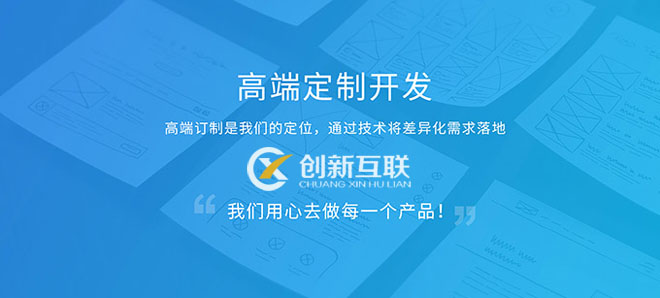新一代的Fragment管理库:Navigation-创新互联
前言
在以往的Fragment使用中,我们都是使用Fragment的事务进行添加,删除,替换等操作,为了快速开发,我们也会自行封装一个FragmentController。在去年,Google推出了Navigation库,目标是更优雅的管理Fragment。

正文
首先我们回顾一下Fragment的事务:
fragmentManager.beginTransaction().add(xxx).commit();如果是常见的多Tab切换Fragment,我们会在XML中使用FrameLayout作为Fragment的容器,然后创建Fragment实例,根据不同情况放入FrameLayout中:
<?xml version="1.0" encoding="utf-8"?>
<LinearLayout xmlns:android="http://schemas.android.com/apk/res/android"
android:layout_width="match_parent"
android:layout_height="match_parent"
android:orientation="vertical">
<FrameLayout
android:id="@+id/container"
android:layout_width="match_parent"
android:layout_height="match_parent" />
</LinearLayout>假设我们要阅读这份代码,坦白的说,你从这个xml可以得到的信息非常的少,你只能猜测这个页面可能是使用了Fragment仅此而已,然后再去找Java或Kotlin文件,具体查看FrameLayout都使用了哪些功能逻辑。
Navigation
现在我们用Navigation库,完成刚才的多Tab切换逻辑:
MainActivity的xml文件:
<?xml version="1.0" encoding="utf-8"?>
<androidx.constraintlayout.widget.ConstraintLayout xmlns:android="http://schemas.android.com/apk/res/android"
xmlns:app="http://schemas.android.com/apk/res-auto"
xmlns:tools="http://schemas.android.com/tools"
android:layout_width="match_parent"
android:layout_height="match_parent"
tools:context=".MainActivity">
<!-- fragment的集合 -->
<fragment
android:id="@+id/nav_host_fragment"
android:name="androidx.navigation.fragment.NavHostFragment"
android:layout_width="0dp"
android:layout_height="0dp"
app:layout_constraintLeft_toLeftOf="parent"
app:layout_constraintRight_toRightOf="parent"
app:layout_constraintTop_toTopOf="parent"
app:layout_constraintBottom_toBottomOf="parent"
app:defaultNavHost="true"
app:navGraph="@navigation/nav_graph" />
</androidx.constraintlayout.widget.ConstraintLayout>nav_graph文件:
<?xml version="1.0" encoding="utf-8"?>
<navigation xmlns:android="http://schemas.android.com/apk/res/android"
xmlns:app="http://schemas.android.com/apk/res-auto"
xmlns:tools="http://schemas.android.com/tools"
android:id="@+id/nav_graph"
app:startDestination="@id/mainFragment"> <!-- 开始的fragment -->
<fragment
android:id="@+id/mainFragment"
android:name="com.lzp.navigation.fragment.MainFragment"
android:label="main"
tools:layout="@layout/fragment_main" />
<fragment
android:id="@+id/secondFragment"
android:name="com.lzp.navigation.fragment.SecondFragment"
android:label="second"
tools:layout="@layout/fragment_sec" />
</navigation>从代码量上来看,确实是增加了,但是对应的xml中可以查看的信息增加了很多,从Activity的XML中我们把Fragment的使用区域封装成一个Fragment,而这个Fragment绑定了一个@navigation/nav_graph文件,在nav_graph中描述了我们将会使用到哪些Fragment。
Navigation的使用
从刚才我们的例子可以看出,Navigation的目标是把Fragment的维护移动到XML中,尽可能简化Fragment的使用复杂度,提高代码的可阅读性和维护性。你可以把Navigation的使用看成是一个高级的Include,只不过他的功能更加丰富和强大。
添加Gradle依赖
dependencies {
def nav_version = "2.1.0"
// Java
implementation "androidx.navigation:navigation-fragment:$nav_version"
implementation "androidx.navigation:navigation-ui:$nav_version"
// Kotlin
implementation "androidx.navigation:navigation-fragment-ktx:$nav_version"
implementation "androidx.navigation:navigation-ui-ktx:$nav_version"
}Google提供了Java和Kotlin两个版本。想要使用Navigation,必须要支持androidX,没有升级到androidX的朋友真的应该抓紧时间了。
使用NavHostFragment
<!-- fragment的集合 -->
<fragment
android:id="@+id/nav_host_fragment"
android:name="androidx.navigation.fragment.NavHostFragment"
android:layout_width="match_parent"
android:layout_height="match_parent"
app:defaultNavHost="true"
app:navGraph="@navigation/nav_graph" />把FrameLayout容器替换成NavHostFragment,app:navGraph="@navigation/nav_graph"是绑定对应的布局文件。@navigation只有在android studio 3.3以上版本才支持。
创建navGraph
在res文件加下创建navigation文件夹,在该文件夹下创建你需要的xml:
之前的Demo的XML代码:
<?xml version="1.0" encoding="utf-8"?>
<navigation xmlns:android="http://schemas.android.com/apk/res/android"
xmlns:app="http://schemas.android.com/apk/res-auto"
xmlns:tools="http://schemas.android.com/tools"
android:id="@+id/nav_graph"
app:startDestination="@id/mainFragment"> <!-- 开始的fragment -->
<fragment
android:id="@+id/mainFragment"
android:name="com.lzp.navigation.fragment.MainFragment"
android:label="main"
tools:layout="@layout/fragment_main" />
<fragment
android:id="@+id/secondFragment"
android:name="com.lzp.navigation.fragment.SecondFragment"
android:label="second"
tools:layout="@layout/fragment_sec" />
</navigation>我们将会使用两个Fragment,分别为MainFragment和SecondFragment,要为他们设置好id,因为Fragment的切换需要使用id。app:startDestination="@id/mainFragment"必须设置,指定默认添加的Fragment的id,如果不设置会直接崩溃。
切换Fragment
从MainFragment切换到SecondFragment:
val navHostController = Navigation.findNavController(activity, R.id.nav_host_fragment)
// 跳转到secondFragment
navHostController.navigate(R.id.secondFragment)
// 返回上一个Fragment
navHostController.navigateUp()Navigation的更多用法
Navigation的使用就是这么简单,如果是Fragment非常熟悉的朋友,大体都能猜到Navigation是怎么做到的,这里就不做更多的分析了,接下来我们一起看看Navigation还提供了哪些便捷的方法。
Fragment的控制几乎都在NavController中。
动态设置NavGraph
val navController = Navigation.findNavController(this, R.id.nav_host_fragment)
// 与inflater类似,加载xml文件
val navGraph = navController.navInflater.inflate(R.navigation.nav_graph)
// 设置NavGraph,还有其他重载方法
navController.setGraph(navGraph, Bundle())Fragment的切换动画
实现Fragment的切换动画有两种方法,第一种非常简单,直接在XML中写:
<fragment
android:id="@+id/mainFragment"
android:name="com.lzp.navigation.fragment.MainFragment"
android:label="main"
tools:layout="@layout/fragment_main">
<action
android:id="@+id/to_second"
app:destination="@id/secondFragment"
app:enterAnim="@anim/enter_anim"
app:exitAnim="@anim/exit_anim"
app:popEnterAnim="@anim/pop_enter_anim"
app:popExitAnim="@anim/pop_exit_anim" />
</fragment>action可以自定义启动模式,启动动画等,id为必填项
app:enterAnim="@anim/enter_anim" // 进入页面的动画
app:exitAnim="@anim/exit_anim" // 退出的页面的动画
app:popEnterAnim="@anim/pop_enter_anim" // 点击返回或回到上一页时,上一个页面的进入动画
app:popExitAnim="@anim/pop_exit_anim" // 点击返回或回到上一页时,当前页面的退出动画
第二种,通过代码设置切换动画:
navHostController.navigate(R.id.to_second, bundle, navOptions {
anim {
enter = R.anim.enter_anim
exit = R.anim.exit_anim
popEnter = R.anim.pop_enter_anim
popExit = R.anim.pop_exit_anim
}
})重点是创建NavOption,他包含了跳转的各种动画,除了举例的方法外,还有很多其他重载的方法,这里就不做介绍了,大家可以自行查看。
Fragment的切换
Fragment的切换使用NavController的navigate()方法,他重载的方法非常多,在这里只介绍几个常用的方法。
- 第一种,通过Fragment的id跳转:
navHostController.navigate(R.id.secondFragment)请注意,这种跳转会直接忽略你设置的Action,直接显示对应id的Fragment。
- 第二种,通过Action的Id进行跳转
// 使用配置的action进行跳转
navHostController.navigate(R.id.to_second)第三种,自定义NavDirections
// 自定义NavDirections
navHostController.navigate(object : NavDirections {
override fun getArguments(): Bundle = bundle
override fun getActionId(): Int = R.id.to_second
})前两中也都有Bundle参数的跳转方法,在arguments中得到传递的参数。
监听Fragment切换
private val onDestinationChangedListener =
NavController.OnDestinationChangedListener { _, destination, _ -> Log.e("lzp", destination.label.toString()) }
val navHostController = Navigation.findNavController(this, R.id.nav_host_fragment)
// 设置监听
navHostController.addOnDestinationChangedListener(onDestinationChangedListener)
// 移除监听
navHostController.removeOnDestinationChangedListener(onDestinationChangedListener)DeepLink
可以通过配置Uri的形式跳转:
<?xml version="1.0" encoding="utf-8"?>
<navigation xmlns:android="http://schemas.android.com/apk/res/android"
xmlns:app="http://schemas.android.com/apk/res-auto"
xmlns:tools="http://schemas.android.com/tools"
android:id="@+id/nav_graph"
app:startDestination="@id/mainFragment"> <!-- 开始的fragment -->
...
<fragment
android:id="@+id/secondFragment"
android:name="com.lzp.navigation.fragment.SecondFragment"
android:label="second"
tools:layout="@layout/fragment_sec">
<deepLink app:uri="lzp://main/second" />
</fragment>
<activity
android:id="@+id/to_second_activity"
android:name="com.lzp.navigation.SecondActivity">
<deepLink app:uri="lzp://second/main" />
</activity>
</navigation>
// 使用Uri进行DeepLinkt跳转
navHostController.navigate(Uri.parse("lzp://second/main"))总结
Navigation上手非常的简单,从源码上看可以推测以后Navigation会对ViewModel提供更好的支持。Navigation更多的体验和用法欢迎大家留言一起讨论学习。
网站题目:新一代的Fragment管理库:Navigation-创新互联
浏览路径:https://www.cdcxhl.com/article8/deicop.html
成都网站建设公司_创新互联,为您提供搜索引擎优化、网站策划、品牌网站制作、网站维护、电子商务、企业建站
声明:本网站发布的内容(图片、视频和文字)以用户投稿、用户转载内容为主,如果涉及侵权请尽快告知,我们将会在第一时间删除。文章观点不代表本网站立场,如需处理请联系客服。电话:028-86922220;邮箱:631063699@qq.com。内容未经允许不得转载,或转载时需注明来源: 创新互联

- 网站维护中权重下降需对症下药 2016-11-10
- 小程序的出现对app有多大冲击 2016-08-07
- 什么样的公司可以帮助企业进行网站制作 2014-07-13
- 网站维护的方法有哪些呢?(一) 2020-07-07
- 如何做网站维护,企业网站为何要做网站维护 2021-09-07
- 网站建设之网站维护的重要性 2022-05-19
- 国内企业与外贸公司需要定制型响应式网站而不是模板网站 2014-06-06
- 网站空间(云虚拟主机)与域名报价参考 2015-03-25
- 定制网站和模板网站有什么区别 2015-12-04
- 专业网站制作的标准画面精美用户体验佳 2015-03-13
- 新网站迟迟不被百度收录的几个解决办法 2016-09-24
- 网站和小程序的区别及优势 2016-08-16